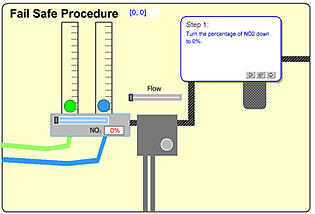

Why is software training so boring?
By Allen Interactions | February 04, 2010 | Custom Learning | 0 Comments

by Ethan Edwards, chief instructional strategist
“It’s impossible to make software training interesting” is one of the most frequent complaints I hear from designers.
At the risk of sounding like Mrs. Robertson, my 7th grade speech teacher who repeated “When life hands you lemons, make lemonade” way too many times, when I say that software training provides a unique opportunity to create especially engaging instruction in e-learning—if we’d only take advantage of it. One of the biggest hurdles in e-learning is that usually you can’t recreate actual performance activities within the limits of keyboard and mouse input. Software training is the one domain where we can actually have the student do in training precisely what must we want them to do in the performance environment.
Further, most software training is procedural in nature, and we know pretty confidently what has to be done to teach a procedure: let learners practice both the individual steps and also practice chaining the steps together without interruption. So a lot of our design decisions are already taken care of for us, which should really let us focus on creating more engagement rather than less.

This is not to say there isn’t a great deal of repetition and tediousness surrounding software training that’s hard to avoid. Our failure comes, though, in being too focused on the uniformity and not enough on the variety within the context of software use. Real life scenarios that drive software processes are where interest in the e-learning can be excavated. For example, years ago at Microsoft I was designing training for database functionality within the Microsoft Works for the IBM-PC product. Instead of just organizing the lessons as a list of arbitrary tasks, the whole training course was centered on an evolving story told through newspaper articles. Each article provided additional clues that the learner needed to use to drive searching and sorting actions within the database to ultimately identify a criminal. This “pulp fiction” context served the general audience in that case well, but there are similarly juicy scenarios we can draw from in our work environments in order to create meaning, memory, interest and elevated significance for what is too often treated as irrelevant drudgery.
Click to see an example of contextual software simulation training.*
.png?width=135&height=135&name=ai-symbol-green%20(3).png)
About the Author: Allen Interactions
Comments
Would you like to leave a comment?
Related Blog Posts

By: Allen Interactions | Mar, 2010
Category: Custom Learning
By: Allen Interactions | Jun, 2009
Category: Custom Learning

